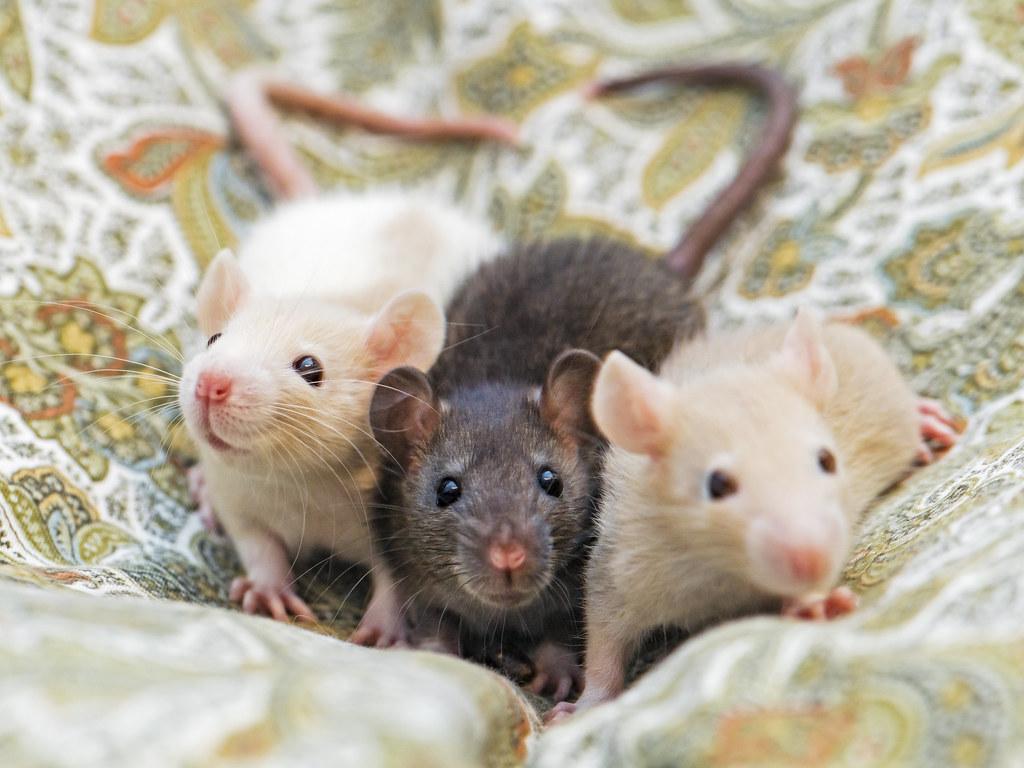Premature babies are at a higher risk of health complications when compared to full-term babies. One of the most common medical interventions used to help premature infants is the use of a ventilator. A ventilator is a machine that helps an infant breathe by providing oxygen and taking out carbon dioxide from their lungs. The length of time a premature baby needs to stay on a ventilator will depend on the infant’s medical condition and the severity of their respiratory distress. This article will discuss how long a premature baby can stay on a ventilator and the factors that can influence this decision.A premature baby is a baby that is born before 37 weeks of gestation. Premature babies are sometimes referred to as preemies and are at higher risk for health complications due to their underdeveloped organs.
Risk Factors for Premature Births
Premature birth is defined as any birth that occurs before 37 weeks of pregnancy. It can be caused by a variety of factors, including maternal health, lifestyle choices, and environmental factors. Some of the most common risk factors for premature births include:
Maternal Health: Certain pre-existing medical conditions can increase the risk of a premature birth, including diabetes, high blood pressure, and infections. Women who have had a premature baby in the past are also more likely to have another one.
Lifestyle Choices: Smoking or using drugs during pregnancy can increase the risk of premature birth. Being overweight or obese before or during pregnancy is also linked to increased rates of prematurity.
Environmental Factors: Exposure to certain pollutants and chemicals can increase the risk of premature birth. Additionally, living in an area with high levels of poverty or violence may be associated with higher rates of prematurity.
Understanding the risk factors for premature births is important in order to take steps to reduce the chances of having a preterm baby. If you are concerned about your risk for having a preterm baby, talk to your healthcare provider about ways you can decrease your chances.
What Is a Ventilator?
A ventilator is a medical device used to assist breathing, typically for patients suffering from respiratory failure or other life-threatening breathing problems. Ventilators are used in hospitals and other healthcare settings to provide oxygen and help patients breathe more easily. The device works by pushing air into the lungs through a tube inserted into the patient’s mouth or nose. It can also be used to help with mechanical ventilation, which prevents patients from having to rely on their own muscles for respiration. Ventilators come in many different sizes and types, depending on the patient’s condition and need.
Ventilators are often used in emergency situations when a patient is unable to breathe on their own due to an illness, injury, or surgery. The device helps maintain oxygen levels in the blood and can be used as a temporary solution while a patient recovers or until they can breathe on their own again. The ventilator also helps with mechanical ventilation, which means it prevents patients from having to rely solely on their own muscles for breathing. Additionally, some ventilators are designed for long-term use with certain conditions such as COPD (chronic obstructive pulmonary disease).
Ventilators have become increasingly important during the COVID-19 pandemic, as many critically ill patients require this form of treatment due to respiratory failure caused by the virus. In these cases, the ventilator helps support oxygen levels in the body while allowing healthcare professionals to provide additional treatments that could help improve the patient’s condition.
How Long Can a Premature Baby Be on a Ventilator?
The length of time a premature baby needs to be on a ventilator depends on the baby’s condition and gestational age. In general, preterm babies may require mechanical ventilation for anywhere from a few days to several weeks. The amount of time needed to support the baby with mechanical ventilation is determined by the severity of the baby’s lung disease and their ability to maintain their oxygen levels without assistance.
Once the medical team determines that the premature baby is stable enough to come off the ventilator, they will gradually decrease the amount of ventilation provided. The process is carefully monitored and adjusted to ensure that the baby’s oxygen levels remain stable. During this weaning process, babies are also closely monitored for any signs of distress that could indicate they are not ready to come off the ventilator yet.
In some cases, preterm babies may require longer-term support from a ventilator in order to give their lungs more time to develop. This could include high-frequency oscillatory ventilation (HFOV) or continuous positive airway pressure (CPAP). These treatments are designed to provide more targeted support for babies with respiratory distress syndrome (RDS) or other forms of chronic lung disease. In such cases, babies may need to remain on these treatments for several weeks or even months before they can be taken off them.
It is important for parents to understand that every preterm baby’s case is different and that there is no clear timeline for how long they will need mechanical ventilation support. However, with careful monitoring and timely intervention, most premature babies can be successfully weaned off mechanical ventilation within a few weeks or months depending on their condition and gestational age.
Factors That Influence the Length of Time a Premature Baby Can Be on a Ventilator
The length of time that a premature baby can be on a ventilator is largely dependent on several factors. The first factor is the gestational age of the baby. Generally speaking, babies born at earlier gestational ages are less mature, and therefore require ventilator support for longer periods. Additionally, infants born before 32 weeks gestation are more likely to have complications that require longer periods of ventilator support.
Other factors that influence the length of time a premature baby can be on a ventilator include the severity of respiratory distress syndrome (RDS), the presence of other medical conditions or infections, and whether or not the baby has been exposed to drugs or alcohol in utero. Babies who have severe RDS or other medical conditions may need to be on a ventilator for longer periods of time in order to stabilize their condition. Babies who have been exposed to drugs or alcohol in utero may also need to be on a ventilator for an extended period due to potential withdrawal symptoms and complications related to their exposure.
Finally, the availability and quality of care provided also play an important role in determining how long a premature baby can stay on a ventilator. Babies who receive high quality and timely care are more likely to recover faster than those who do not have access to such care. Furthermore, premature babies who are monitored regularly by qualified medical professionals may be able to come off of their ventilators sooner than those whose conditions are not as closely monitored.
In summary, there are several factors that influence how long a premature baby can stay on a ventilator including gestational age, severity of respiratory distress syndrome, presence of other medical conditions or infections, exposure to drugs or alcohol in utero, and availability and quality of care provided. It is important for parents and healthcare providers to work together closely when making decisions about how long a premature baby should stay on a ventilator in order ensure they receive the best possible care during this critical period.

The Role of the Neonatal Intensive Care Unit (NICU)
The Neonatal Intensive Care Unit (NICU) is a specialized unit that provides comprehensive care for newborn babies who require extra care due to premature birth, congenital abnormalities, or other medical complications. The NICU is staffed by a multidisciplinary team of doctors, nurses, and other health professionals who provide round-the-clock medical care for these critically ill newborns. The team monitors the baby’s condition and works to ensure they receive the best possible care.
The NICU team is responsible for providing medical treatment to address any medical issues the baby may have, such as breathing problems, infections, or heart or lung issues. They also monitor the baby’s progress and adjust their course of treatment accordingly. The team may also provide nutrition support if needed and work with families to ensure they are informed about their baby’s condition and treatments.
In addition to providing medical treatment, the NICU team also provides emotional support to both the parents and infants. They understand that having a newborn in intensive care can be an overwhelming experience for families and work hard to help them cope with their emotions. The NICU staff is passionate about helping families get through this difficult time and offering them guidance and reassurance.
The Neonatal Intensive Care Unit plays an important role in providing babies with quality care during their first weeks of life. Their commitment to helping families get through this difficult time is invaluable, and they continue to work hard every day to ensure that all newborns receive the best possible care.
Alternative Treatments to Being on a Ventilator
There are a variety of alternative treatments available for those who may not be able to remain on a ventilator. Depending on the individual’s medical condition, some of these treatments may be more effective than others. For example, oxygen therapy can be used to help maintain oxygen levels in the body. This therapy may also reduce the need for mechanical ventilation. Other treatments that can be used include non-invasive ventilation, high-flow nasal cannula, or continuous positive airway pressure (CPAP). Non-invasive ventilation is similar to traditional mechanical ventilation but does not involve an endotracheal tube and ventilator. High-flow nasal cannula is an oxygen delivery device that provides higher concentrations of oxygen than traditional oxygen masks and nasal cannulas. Continuous positive airway pressure (CPAP) is a non-invasive form of mechanical ventilation that applies gentle pressure to the airways in order to keep them open and improve breathing. These alternative treatments may provide much needed relief for those who cannot stay on a ventilator and can help prevent other serious complications from occurring.
In addition, some individuals may benefit from medications or therapies that can help reduce the severity of their symptoms and ultimately reduce their need for ventilator support. Medications such as bronchodilators, corticosteroids, or antibiotics can all help reduce inflammation in the lungs and improve breathing. Additionally, physical therapy or pulmonary rehabilitation can also help improve breathing by strengthening respiratory muscles and improving lung function.
Finally, it is important to note that these alternative treatments are not always successful in reducing the need for ventilator support. It is important for individuals to discuss their options with their doctor or health care team in order to find out which treatment plan will be most beneficial for them and their specific medical condition.
Long-Term Implications of Being on A Ventilator for Premature Babies
Ventilators are used to help premature babies breathe. This life-saving device can help a baby born too early to survive, but it also has long-term implications. When a baby is put on a ventilator, they are at risk for developing several potential complications.
The most common and serious complication from being on a ventilator is the development of bronchopulmonary dysplasia (BPD). This is a type of chronic lung disease that causes the baby’s lungs to be underdeveloped and unable to function properly. As a result, babies with BPD often require supplemental oxygen and may need more frequent medical care or treatments.
Additionally, babies who have been on a ventilator may experience delays in their development. Delays can be seen in the areas of growth, motor skills, language, and cognitive abilities. The earlier the baby was born and the longer they were on the ventilator, the more likely they are to experience developmental delays.
Being on a ventilator can also cause other long-term complications such as vision and hearing problems, gastroesophageal reflux disease (GERD), and chronic respiratory infections. These conditions can have an impact on the quality of life for premature babies for years to come.
Finally, there is an increased risk of death for babies who have been on ventilators for extended periods of time. While this risk is highest in very premature babies (born before 28 weeks gestation), all preterm infants who spend time on a ventilator are at risk for death due to complications from their respiratory illness or other medical conditions that can arise as a result of their prematurity or lack of development.
Overall, being placed on a ventilator can be an important step in helping premature babies survive, but it also carries with it long-term implications that must be considered when making decisions about treatment options for these fragile infants.

Conclusion
The answer to the question of how long a premature baby can stay on a ventilator depends on the individual circumstances. Each case is unique and requires medical evaluation and decisions based on the infant’s clinical needs. In general, premature infants can stay on a ventilator for an extended period if necessary, but it is important to keep in mind that there are risks associated with prolonged ventilation, such as infection, barotrauma, and lung injury. It is also important to keep in mind that ventilation should only be used when medically necessary and that supportive care measures such as oxygen therapy may be sufficient for some premature infants.
In conclusion, how long a premature baby can stay on a ventilator ultimately depends on their individual needs and must be evaluated by medical professionals. While an extended period of ventilation may be possible in some cases, it is important to weigh the risks associated with prolonged ventilation against potential benefits.




